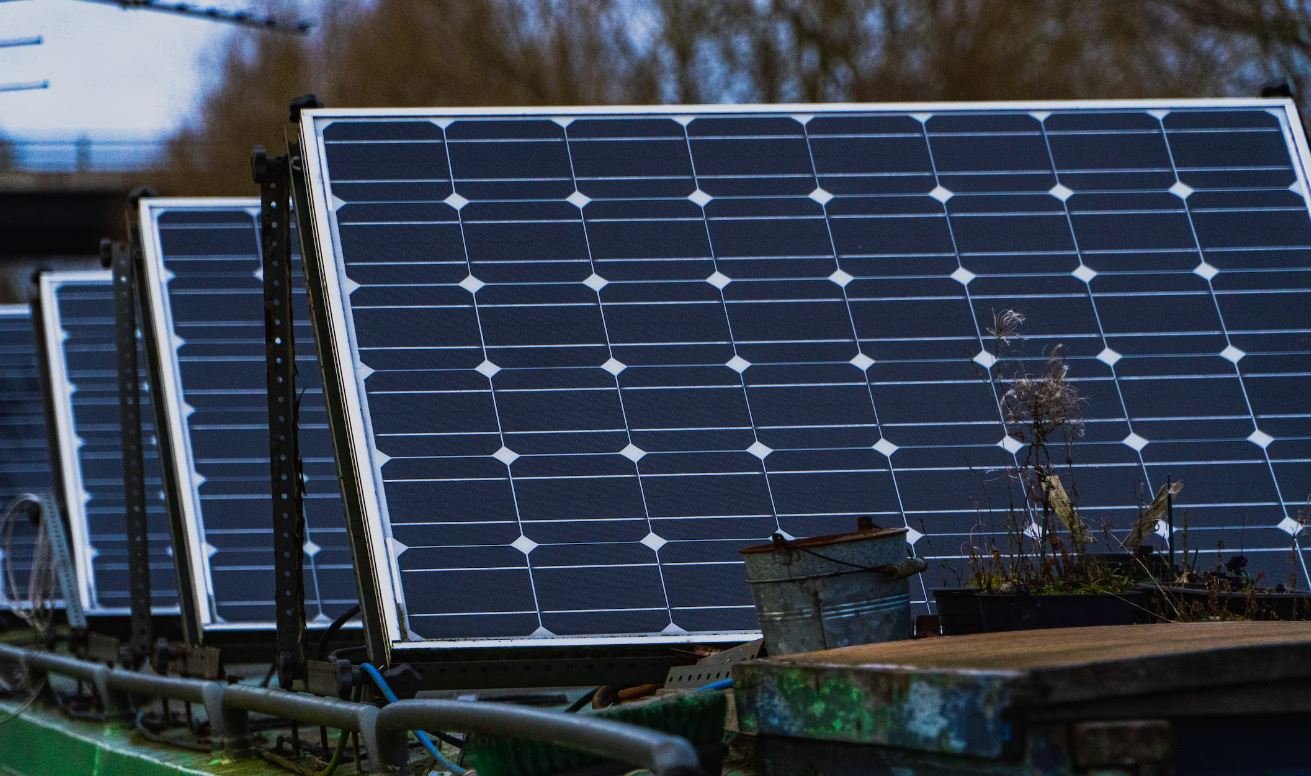Solarcity Powerwall
Introduction
Solarcity Powerwall is a revolutionary energy storage system that allows homeowners to store excess solar energy for later use. Created by Tesla, it has gained popularity due to its efficiency, durability, and ability to reduce electricity bills. With an increasing focus on renewable energy, the Solarcity Powerwall has become a game-changer in the solar industry.
Key Takeaways
- The Solarcity Powerwall enables homeowners to store excess solar energy.
- It reduces electricity bills and provides a reliable backup power source.
- The system is efficient, durable, and environmentally friendly.
- With its sleek design and easy installation process, it seamlessly integrates into any home.
Efficiency and Durability
The Solarcity Powerwall boasts impressive efficiency, allowing homeowners to maximize their solar energy usage. With its advanced technology, it can store up to 13.5 kilowatt-hours (kWh) of energy, providing ample power during peak demand periods. This sustainable solution contributes to a more self-sufficient and greener lifestyle.
*The Powerwall’s lithium-ion battery cells are designed to last for up to 10 years with regular use, ensuring long-term reliability and performance.
Seamless Integration
One of the standout features of the Solarcity Powerwall is its ability to seamlessly integrate into any home. Its compact and sleek design allows for both indoor and outdoor installations, providing flexibility for homeowners. The easy installation process ensures minimal disruption during setup, making it a hassle-free addition to any renewable energy system.
Powerwall Specifications
| Specifications | Powerwall 1 | Powerwall 2 |
|---|---|---|
| Usable Capacity | 6.4 kWh | 13.5 kWh |
| Depth of Discharge | 100% | 100% |
| Rated AC Power Output | 2 kW continuous 3.3 kW peak |
5 kW continuous 7 kW peak |
*Table 1: Comparison of Powerwall 1 and Powerwall 2 specifications.
Reduced Electricity Bills
By utilizing the Solarcity Powerwall, homeowners can significantly reduce their electricity bills. During the day, when solar panels generate excess energy, the Powerwall stores it for later use. This stored energy can then be utilized during peak demand periods or when solar generation is low, minimizing reliance on the grid and resulting in substantial cost savings over time.
Benefits of the Solarcity Powerwall
- Reduces reliance on the grid and provides energy independence.
- Offers seamless integration with existing solar panels.
- Provides backup power during outages or emergencies.
- Contributes to a greener and more sustainable lifestyle.
Environmental Impact
By using the Solarcity Powerwall, homeowners can significantly reduce their carbon footprint. With its ability to store excess solar energy, reliance on fossil fuel-based grid electricity decreases, resulting in lower greenhouse gas emissions. Additionally, the Powerwall’s long lifespan and recyclable battery cells further contribute to a cleaner and more sustainable environment.
Powerwall Cost and Savings
| Item | Cost |
|---|---|
| Powerwall Unit | $6,500 |
| Installation | $1,000 – $2,000 |
| Estimated Savings over 10 years | $5,000 – $8,000 |
*Table 2: Estimated costs and savings related to installing the Solarcity Powerwall.
Final Thoughts
The Solarcity Powerwall is a game-changing energy storage solution that offers efficiency, durability, and cost savings. With its ability to seamlessly integrate into any home, it provides homeowners with renewable and reliable power. By reducing reliance on the grid and promoting sustainable living, the Powerwall brings us one step closer to a greener future.

Common Misconceptions
Misconception 1: The Powerwall can power an entire household
One common misconception people have about SolarCity’s Powerwall is that it can power an entire household. While the Powerwall is capable of storing a significant amount of energy, it is not designed to provide power to all the appliances and devices in a home indefinitely. It is intended to provide backup power during outages or periods of low solar production.
- The Powerwall has a maximum capacity of 13.5 kilowatt-hours.
- It can power essential appliances like refrigerators, lights, and small electronics for a limited time.
- For long-term power needs, additional Powerwall units or a combination of solar and grid power may be necessary.
Misconception 2: The Powerwall is a cost-effective solution for everyone
Another misconception is that the Powerwall is a cost-effective solution for every homeowner. While the Powerwall can help reduce electricity bills and provide energy independence, the initial cost of the system, installation fees, and additional necessary equipment may not make economic sense for everyone.
- Homeowners with high electricity usage and expensive peak-time rates can benefit more from the Powerwall.
- For homeowners with low electricity usage or access to cheap electricity rates, the cost of the Powerwall may not justify the potential savings.
- Consulting with a solar energy expert can help determine if the Powerwall is a cost-effective solution based on individual energy needs and financial constraints.
Misconception 3: The Powerwall can completely eliminate electricity bills
Some people mistakenly believe that installing a Powerwall can completely eliminate electricity bills. While the Powerwall can help reduce reliance on grid power and lower electricity bills, it does not eliminate the need for a connection to the electrical grid entirely.
- The Powerwall is designed to store excess solar energy for use during periods when solar production is low.
- During times of high energy demand or low solar production, the Powerwall may still need to draw power from the grid.
- Utility fees, taxes, and other charges will still be applicable, even with a Powerwall system.
Misconception 4: The Powerwall is maintenance-free
Many people believe that once the Powerwall is installed, it requires little to no maintenance. While the Powerwall is designed to be a low-maintenance system, regular inspections, software updates, and potential battery replacements are necessary to ensure optimal performance and longevity.
- Regular inspections can identify any potential issues or malfunctions before they become significant problems.
- Software updates are essential for improving performance, efficiency, and compatibility with the latest technology.
- Battery replacements may be required after a certain number of years to maintain the Powerwall’s capacity and reliability.
Misconception 5: The Powerwall is suitable for all homes and locations
Lastly, some people assume that the Powerwall is suitable for all homes and locations. However, factors such as available sunlight, space constraints, local regulations, and the condition of the electrical system may impact the feasibility and effectiveness of installing a Powerwall.
- Homes with limited access to sunlight may not generate enough solar energy to sufficiently charge the Powerwall.
- Space constraints may prevent the installation of multiple Powerwall units or limit the overall energy storage capacity.
- Local regulations and utility policies may restrict or impose additional costs on Powerwall installations.

Solarcity Powerwall: Revolutionizing Solar Energy Storage
The Solarcity Powerwall is a state-of-the-art battery storage system designed to harness and store excess electricity produced by solar panels. This revolutionary technology not only helps to increase the self-consumption of solar energy but also enhances energy efficiency and reduces reliance on traditional grid power. Below are ten fascinating aspects of the Solarcity Powerwall:
1. Unlimited Charging Cycles
The Solarcity Powerwall has an outstanding lifespan, capable of enduring repetitive charging and discharging cycles without degradation, ensuring long-lasting performance.
2. Energy Capacity
The Powerwall can store up to 13.5 kilowatt-hours (kWh) of energy, providing a reliable backup power supply during outages or periods of high energy demand.
3. Efficient Design
With a compact and streamlined design, the Powerwall can easily be integrated into existing solar energy systems, offering a seamless and aesthetically pleasing installation.
4. Weather Resilience
The Powerwall is built to withstand extreme weather conditions, including high temperatures, freezing temperatures, and heavy rain, ensuring reliable and consistent performance regardless of the climate.
5. Mobile App Control
The Powerwall can be monitored and controlled remotely through a user-friendly mobile app, allowing users to track energy consumption, adjust settings, and receive real-time notifications.
6. Time-Based Control
Utilizing time-based control, the Powerwall intelligently charges during off-peak hours when electricity rates are lower, maximizing savings and optimizing energy usage.
7. Scalability
The Powerwall is easily scalable, enabling users to increase their energy storage capacity by connecting multiple units, making it suitable for various applications, from residential to commercial.
8. Sustainable Materials
The Powerwall is constructed using eco-friendly and sustainable materials, aligning with Solarcity’s commitment to environmental responsibility and reducing the carbon footprint.
9. Backup Power
In the event of a power outage, the Powerwall seamlessly switches to backup mode, providing uninterrupted electricity supply to critical household appliances until power is restored.
10. Grid Independence
With the Powerwall, homeowners can reduce their reliance on the traditional power grid, achieve electricity independence, and contribute to a more resilient and sustainable energy future.
Conclusion
The Solarcity Powerwall represents a significant breakthrough in solar energy storage, offering an array of compelling features and benefits. This innovative solution not only improves the efficiency and reliability of solar energy utilization but also empowers individuals and communities to transition towards a more sustainable and grid-independent future. With the Powerwall, Solarcity is driving the renewable energy revolution forward, creating a cleaner, greener, and more sustainable world for generations to come.
Frequently Asked Questions
1. What is Solarcity Powerwall?
Solarcity Powerwall is a home battery storage system developed by Solarcity, a leader in clean energy solutions. It allows homeowners to harness and store energy from their solar panels, providing greater control over energy usage and reducing reliance on the electrical grid.
2. How does Solarcity Powerwall work?
Solarcity Powerwall stores excess energy generated by solar panels during the day and makes it available for use at night or during power outages. It seamlessly switches between solar power, battery power, and grid power, ensuring a continuous supply of electricity.
3. What are the advantages of using Solarcity Powerwall?
Solarcity Powerwall offers several advantages, including:
- Greater energy independence: Powerwall reduces reliance on the electrical grid, allowing homeowners to use their own stored solar energy whenever needed.
- Backup power during outages: In the event of a power outage, Powerwall can provide uninterrupted electricity to essential appliances and devices in your home.
- Optimized energy usage: Powerwall can be programmed to consume electricity during off-peak hours, helping homeowners take advantage of lower electricity rates.
- Reduced electricity bills: By utilizing stored solar power instead of drawing energy from the grid, Powerwall can significantly lower electricity bills.
4. How long does Solarcity Powerwall last?
Solarcity Powerwall is designed to have a lifespan of at least 10 years. It comes with a warranty that covers this period, providing peace of mind to homeowners who invest in the system.
5. Can I install Solarcity Powerwall in my home?
Solarcity Powerwall can be installed in a variety of residential properties, including single-family homes, townhouses, and apartment buildings. However, it is important to consult with a qualified contractor to assess the feasibility and suitability of installation in your specific situation.
6. How much does Solarcity Powerwall cost?
The cost of Solarcity Powerwall can vary depending on factors such as the size of your home, energy requirements, and installation considerations. It is recommended to request a quote from Solarcity or a certified installer to determine the specific cost for your situation.
7. Will Solarcity Powerwall work with my existing solar panel system?
Yes, Solarcity Powerwall is compatible with most existing solar panel systems. It can seamlessly integrate with your current setup to enhance energy storage and usage capabilities.
8. Can Solarcity Powerwall be used off-grid?
Yes, Solarcity Powerwall can be used off-grid. It allows homeowners to store excess solar energy during the day and use it at night or during periods of reduced solar generation.
9. Is Solarcity Powerwall environmentally friendly?
Yes, Solarcity Powerwall is environmentally friendly. By utilizing stored solar energy, it reduces reliance on fossil fuels and helps decrease carbon emissions associated with traditional electrical grid usage.
10. How can I get more information about Solarcity Powerwall?
If you would like more information about Solarcity Powerwall, you can visit the official Solarcity website or contact a certified installer in your area. They can provide detailed information about the product, installation process, and any other inquiries you may have.




